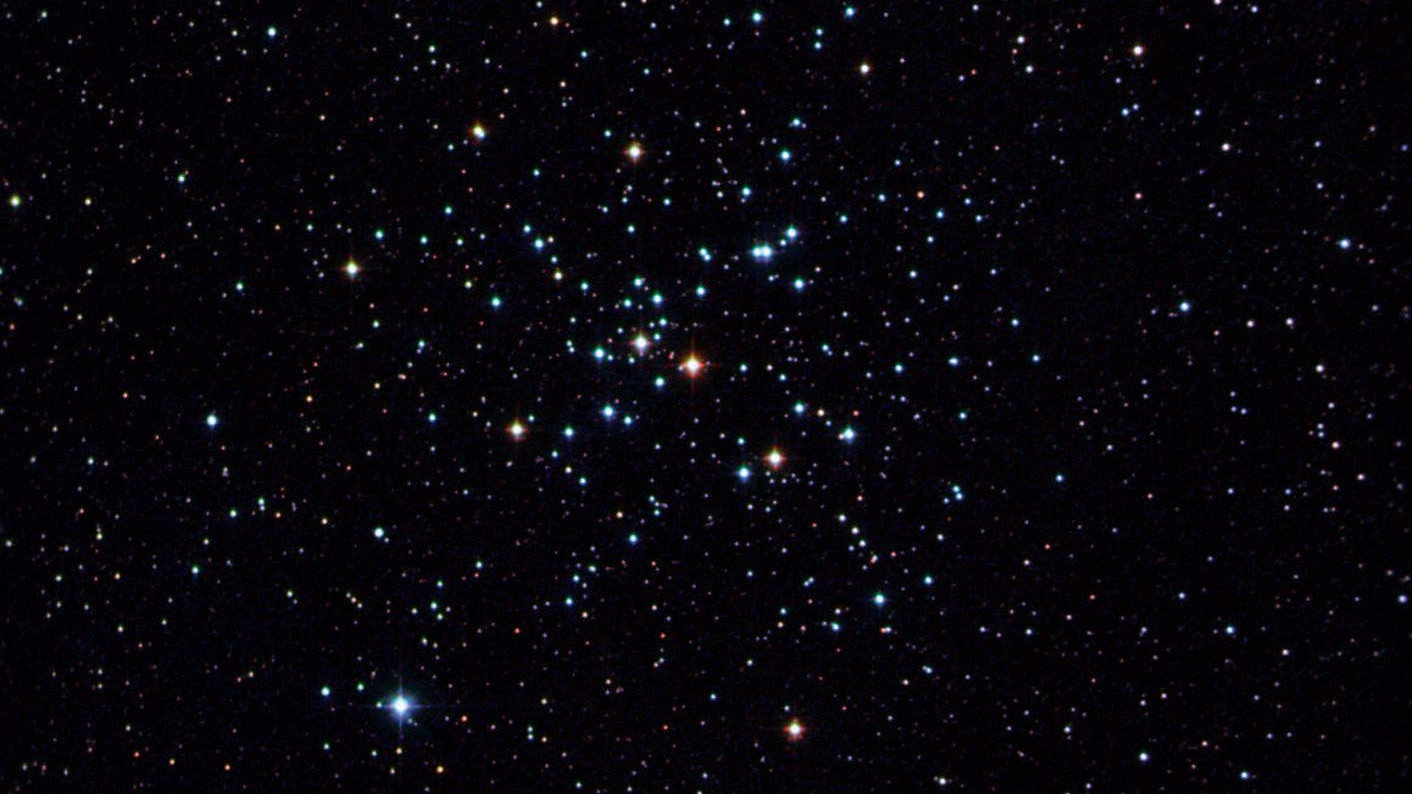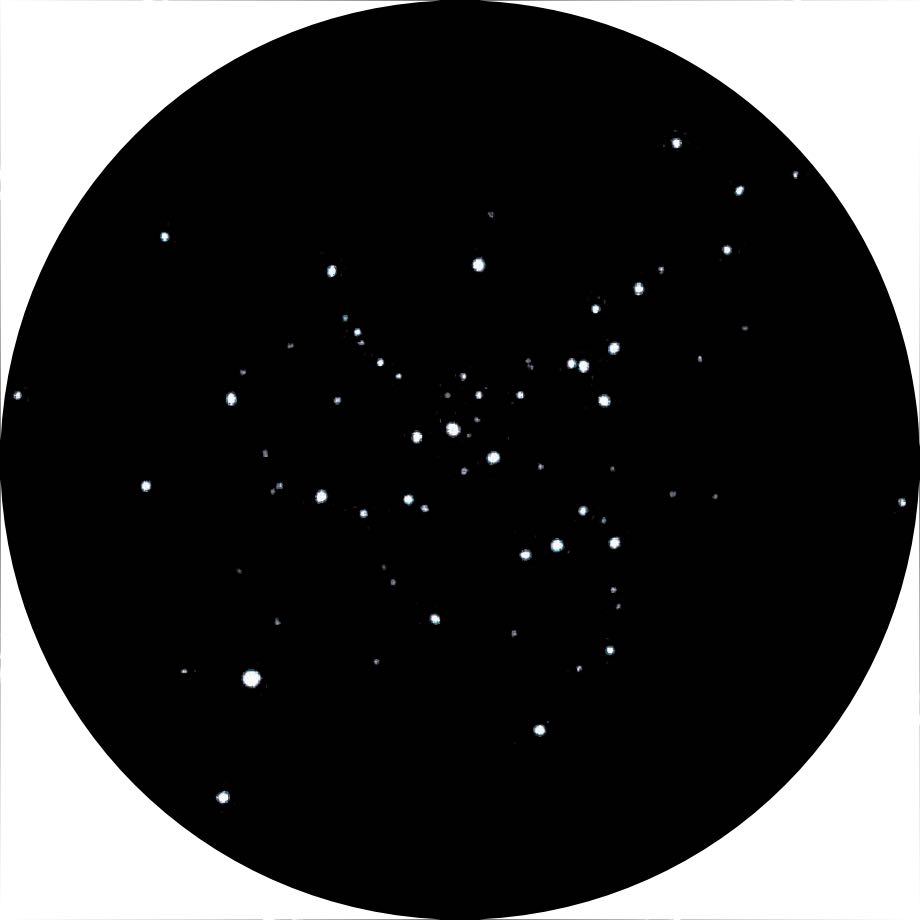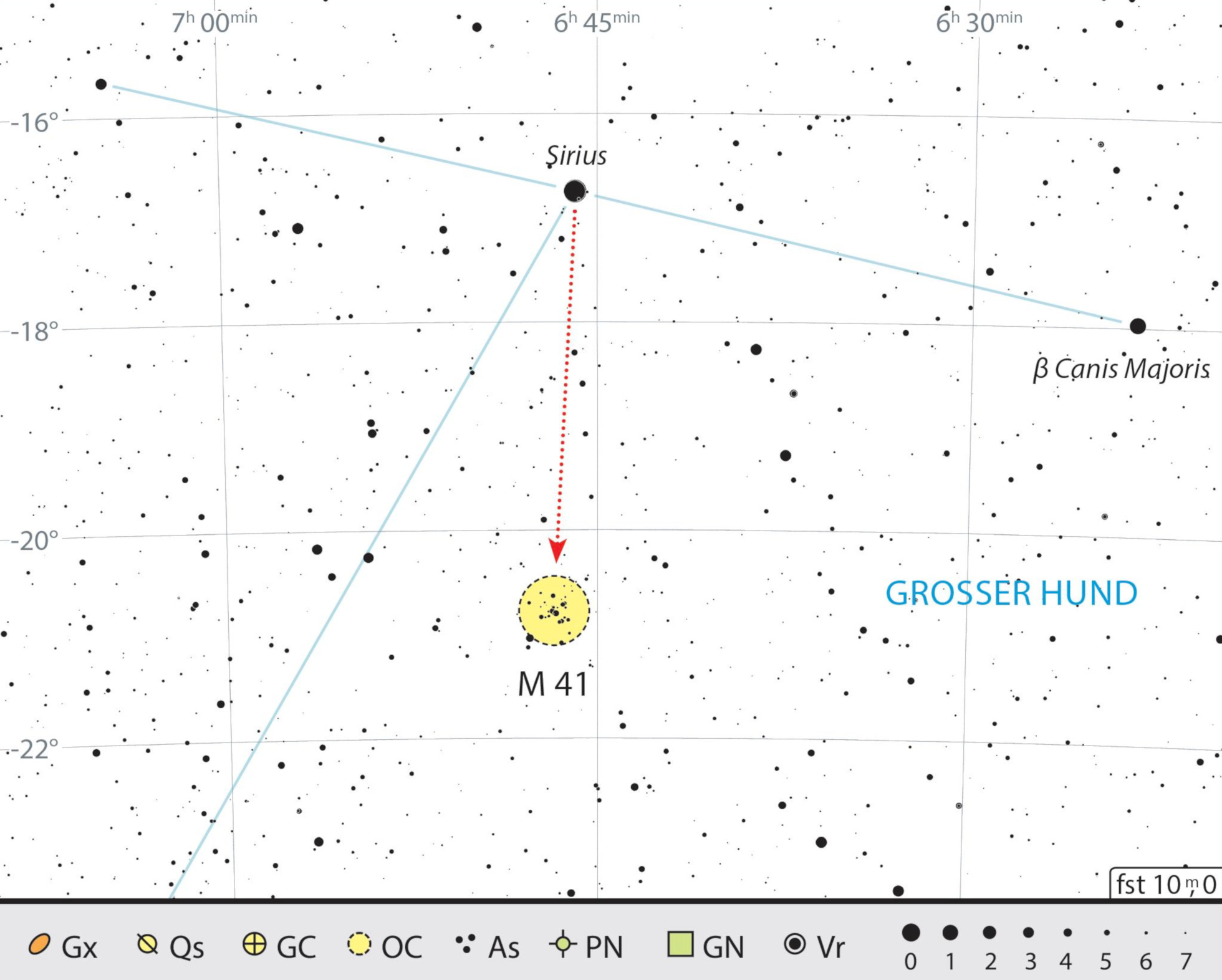M41 – a cluster in a challenging location
The buildings around you should not be too tall - we are travelling in a horizontal direction tonight. Here, one of the most beautiful city destinations awaits you.
 The cluster Messier 41 in the constellation of Canis Major captured
with a 4.5 inch Newtonian telescope with a focal length of 440mm. Michael Deger / CCD Guide
The cluster Messier 41 in the constellation of Canis Major captured
with a 4.5 inch Newtonian telescope with a focal length of 440mm. Michael Deger / CCD GuideM41, the open cluster in the constellation of Canis Major, with a declination of more than –20°, is in a challenging location for city astronomers: on the one hand, the buildings or vegetation close to the telescope site must allow you a clear line of sight to the horizon, and on the other hand, the particularly pronounced light pollution at ground level in urban areas swallows most objects.
However, these obstacles should not stand in the way of an excursion to M41 since, with an apparent magnitude of 4.5, this cluster is one of the brightest deep sky objects in the Messier catalogue. And in fact, being 35’ across, this rather large cluster is surprisingly stubborn in its resistance to the light pollution found in a large city, at least that is the experience of this author in the metropolis of Cologne.
Easy to find?
 Drawing of Messier 41 as seen in
an 8 inch Newtonian at 40 times magnification. Michael Vlasov
Drawing of Messier 41 as seen in
an 8 inch Newtonian at 40 times magnification. Michael VlasovA first glance at a star chart suggests that M41 is easy to find even without navigation aids: the cluster is just 4° away from the unmistakable bright Sirius – and lies almost exactly to the south. Therefore, it is often recommended to simply pan your telescope from Sirius to the south. In this author's experience, however, the southern part of the sky close to the mag. -1.5 bright α Canis Majorum (CMa) is a section of the sky that is carpeted with small stars, in which you can easily lose yourself and the target object. In addition, Sirius' bright light shines deep into its surroundings. So if you have problems locating M41, we recommend that you take a detour by starhopping. From Sirius head first to Mirzam or β CMa, which is located to the south-west and is also quite bright.
From here, we take a zigzag route back to the stars 8, 6 and 7 CMa, which form a distinctive open semicircle to the east, then further in a south-easterly direction to a striking pair of stars. With 25× magnification, M41 should now be visible at the eastern edge of your eyepiece.
Breathtaking city object
In the opinion of this author, this cluster is one of the most beautiful objects that the city night sky has to offer. To the south-east, the striking 12 CMa borders the cluster, which reveals around 25 to 30 equally bright stars, filling the eyepiece at 50x magnification. With a slight increase in magnification, the number of cluster members can grow to 50 stars, which then offer an almost breathtaking picture. A pair of stars in the centre, whose orange colour is even discernible in the city sky, is a particularly beautiful sight. However, you should not go higher than 75×. This is because you can lose the cluster’s character which gives M41 its special allure and makes it an absolute must-see - especially for city astronomers.
 Finding chart of Messier 41 in the constellation of Canis Major. J. Scholten
Finding chart of Messier 41 in the constellation of Canis Major. J. ScholtenKarl-Peter Julius
